Queensland Bulls top 50, last 45 years: Today No.11-20
Queensland cricketers have been powerhouse contributors to Test and domestic cricket for decades. Today Andrew Dawson presents part three on a four-part series of our greatest 50 since 1975. Today are numbers 11-20.
Local sport
Don't miss out on the headlines from Local sport. Followed categories will be added to My News.
Queensland cricketers have been powerhouse contributors to Test and domestic cricket for decades.
Today Andrew Dawson presents part three on a four-part series of our greatest 50 since 1975. Today are numbers 11-20
Sam Trimble and Tony Dell, both grand players of the past, just miss the cut-off as do a host of outstanding players over the last 45 summers.
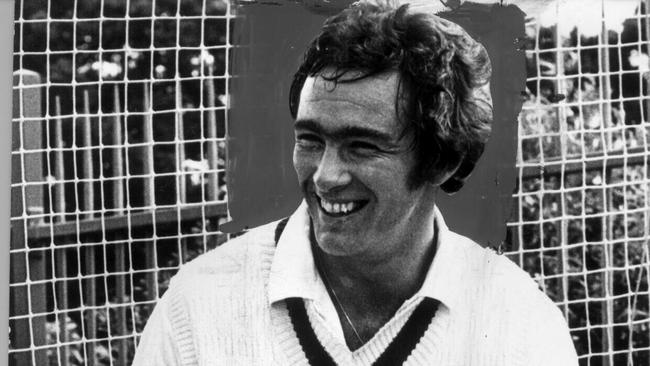
RELATED LINKS
Bulls’ best player since 1975: No. 36-50.
Family affair at the Dooley household
Jack Clayton reflects on brotherly rivalry
Jeh siblings blessed with beginners luck
Bulls best players since 1975: No.21-35
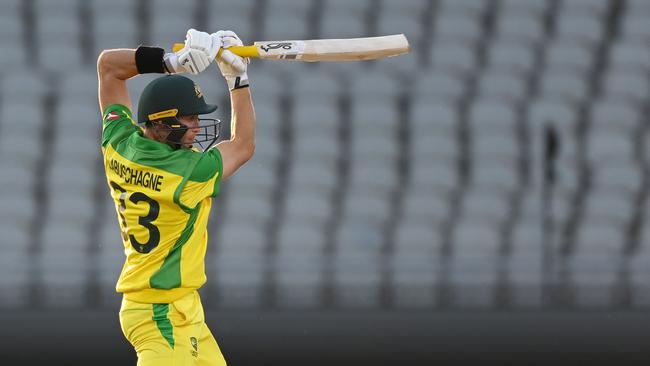
No. 11.
MARNUS LABUSCHAGNE (Redlands)
The drums were beating long before this schoolboy prodigy was sighted, and his reputation was rampant across the cricket community. Now, after observing Labuschagne over the last 18 months of Test cricket, everyone knows what all the fuss was about. He is ranked No. 12 here, but before the ink dries on this article he may have climbed one or two in the pecking order, such is his rapid progress, and could eventually rate alongside the top five nonminations to be revealed tomorrow. The fact he out performed Steve Smith last summer gives an insight into where this youngster is heading. And to think he is one of ours. You beauty boy.
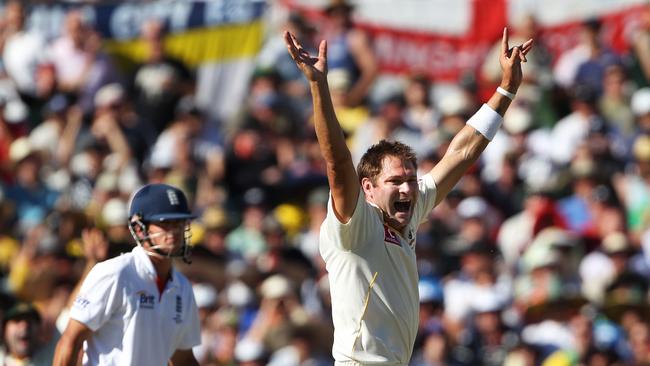
No. 12.
RYAN HARRIS (Toombul)
A late arrival in Queensland but we will take him and embrace him forever more. What a bowler. Let’s be grateful for the brief time we had him saddled up and pounding into bowler at the Gabba and Allan Border Field. He made his first class debut for South Australia in 2001-02 but moved to Queensland in 2008 which is where his career exploded. The signs were outstanding early for the Bulls when, in his first season in the Sunshine State, he claimed 33 wickets at 26.48. Then, when he broke into the Australian side, he was like Glenn McGrath on steroids, with his 113 wickets in 27 Tests coming at a sizzling strike rate of 50.7. It was all too brief.
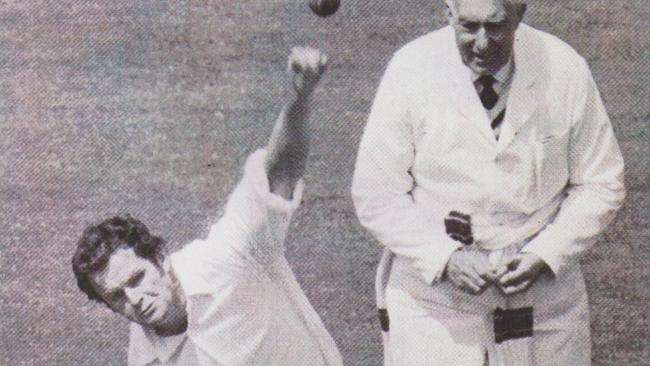
No. 13.
GEOFF DYMOCK (Norths)
Dymock is a cricketing treasure. A highly skilled left arm swing bowler, Dymock formed the perfect Sheffield Shield new ball attack with speedster Jeff Thomson. From one end Thomson’s cyclonic bursts would either blast batsmen out or scare batsmen out. From the other end Dymock loped in like he was on a slow Sunday morning jog around his quiet home town of Maryborough. But he could make the ball sing with inswing and outswing and it was a combination for the ages. He made his state Test in 1974, and although he picked up 5-58 on debut against New Zealand, his greatest success came as the sun was starting to set on his career between 1979-1982.
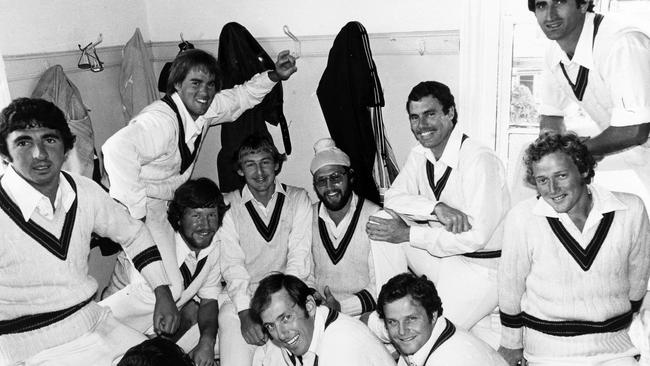
With domestic cricket weakened by Kerry Packer’s World Series Cricket, Dymock started playing regular Test cricket where he moved mountains to take more than 20 wickets in three Tests on flat Indian pitches. When Lillee and co returned from WSC, he was retained in the Test side and produced elite performances on home soil against England and the West Indies. He even bowled English opener Geoff Boycott which was about as easy as slipping past parking attendants undetected at sporting events. His Queensland farewell was also memorable, being chaired from the field after captaining Queensland to only its second ever major trophy – a McDonald’s Cup domestic one-day trophy. In all he took 78 Test wickets at 27.20 and 425 first class wickets at 26.91.
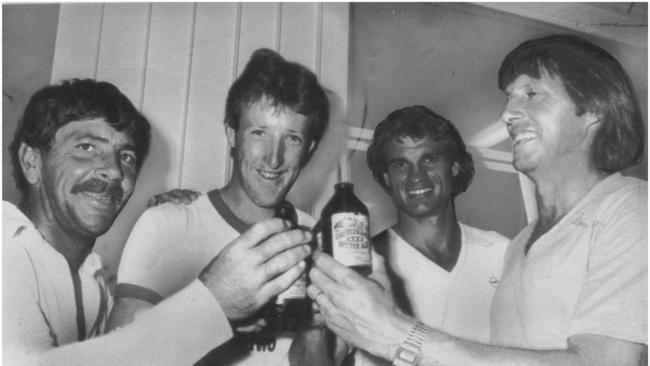
No. 14.
KEPLER WESSELS (Valley)
Physically and mentally tough, Wessels put steel into the backbone of Queensland and Australian teams between 1979 and 1986. South Africa born, Wessels had to wait several years to qualify for Australian citizenship but when he did, he burst onto the scene with 162 and 46 on Test debut against England at his cherished Gabba. For Queensland he was a run machine. He would thrash cuts and cover boundaries, and around those two strokes accumulate ones and twos that eventually saw him mount almost 5500 at around 55 for Queensland. In his final game for Queensland – the 1985-86 Sheffield Shield final – he scored runs, claimed two wickets and ran a NSW player out. So inspired was in over those five days, you got the impression that if the team bus had broken down around the SCG, he would have grabbed a tow rope, hitched it to the bus and dragged it along Moore Park Road between his teeth. For Australia he was Allan Border’s lieutenant.
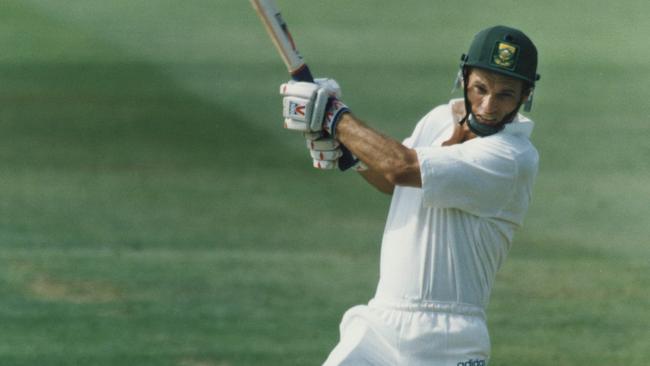
He averaged 43, but just as valuable as the runs was the message he sent back to the dressing room through effort. This was highlighted during a series against the West Indies who possessed the greatest fast bowling battery of all-time. Wessels started the series with 0, 2 and 0 – all dismissed by the towering Joel Garner. Big Bird’s Bunny screamed the tabloids of the day in reference to Wessels’ struggles against Garner. But Wessels’ response was to continue to back his cut shot, then go about accumulating 550 runs in the five Test series at 55. It was a monumental performance against bowling the modern generation who both play and observe would find difficult to comprehend. It is also a nice footnote that Wessels, a man Billy Lawry once dubbed as “The Brisbane Hero’’, now calls the River City home.
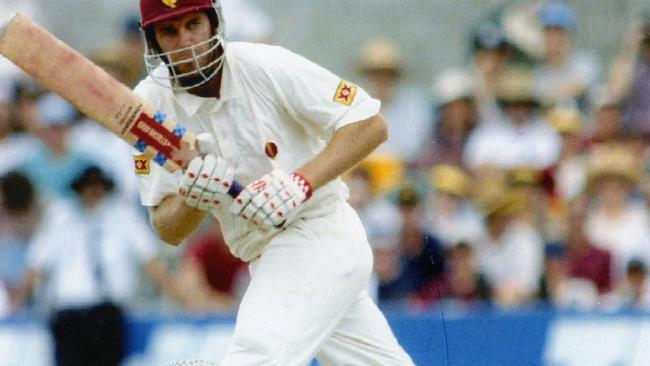
No. 15
MARTIN LOVE (University)
The Mundubbera product who came to Brisbane via Toowoomba Grammar School was just style personified. Of laconic nature, Love would stroll to the crease dragging his bat like he was wandering in off the paddock with a bit of lumber to be used for fire wood. Calmly, in a manner surely giving confidence to the dressing room, he would take guard and then bang – the ball would ping off his bat. When he batted, he had more timing than a Swiss watch. The legendary Toowoomba-born Bill Brown, who went on three Ashes tours with Sir Donald Bradman, once likened Love to stylish batsmen Brian Booth and Mark Waugh. His demeanour also seemed unflappable. Whether it was the Vics yapping away at him after the fall of an early wicket, or Glenn McGrath sending one past his nose, Love’s even temperament saw him through. He was also a wonderful slipper and when he was selected to play for Australia, it was an honour he richly deserved. With respect to the current crop of Test batting contenders, he would have walked into the current Australian squad, so good was he. He scored 10,132 Shield runs, for goodness sake, and his average of 45.23 stood up over time.
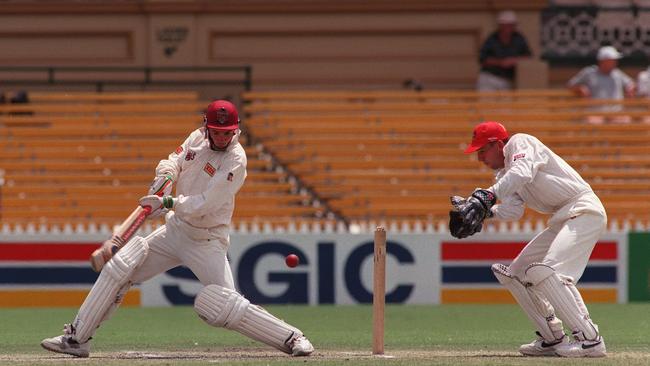
No. 16.
JIM MAHER (Norths)
I’ll give you 9086 reasons why Maher makes it to this lofty ranking on what is an all-star list. That is how many Sheffield Shield runs Maher scored for his beloved state. He bleed maroon, and one got the impression that the sweaty Bulls cap he wore at the Gabba would end up under his pillow at night as a form of comfort. When NSW came knocking with an offer to lure him away, Maher saw the dollar signs flicker in front of his eyes, but he followed his heart and remained in his beloved Queensland. The Babinda Boy was as valuable off the field as he was on it. He was a funny man with more comic lines than Jerry Seinfeld or Bob Hope.
Importantly, however, that wit, that humour which was present in the good times, was also there in the dark periods of the dressing room if Queensland had a bad day at the office. He started his career in forgettable fashion, running out Australian captain Allan Border after nervously taking off from the non striker’s end like a startled hare. Then, next ball, he almost ran out Ian Healy. What a start to a career it would have been – two balls, two run outs of Healy and Border. As a batman he started at No. 6, but the best batting of his career came as an opener. He altered his technique, played straight and his reward was a mountain of runs and ultimately Australia one-day selection. In the 2006 Sheffield Shield, having been part of a Queensland side batted into submission to lose a Shield decider, Maher inflicted sweet revenge on arch rivals Victoria. Maher scored 223, adding 297 with Love and at one stage the score was 1-454 in the Shield grand final. Do you think Jim Maher enjoyed that?
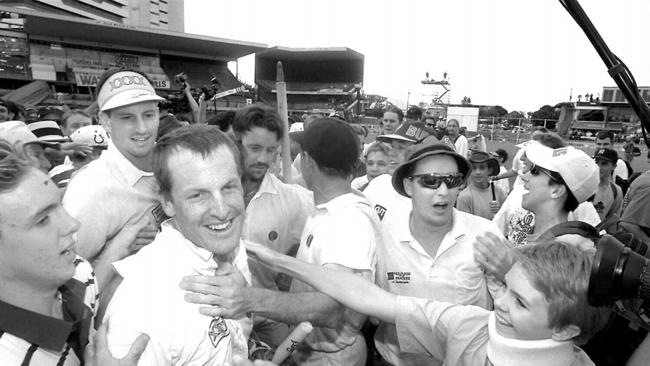
No. 17.
WADE SECCOMBE (University)
Well here is another one, yet another magnificent Queensland gloveman. Queensland had the best in Ian Healy and also Don Tallon, then were blessed to have Wally Grout, John Maclean, Peter Anderson, Seccombe and Chris Hartley around them. During Queensland cricket’s greatest era, Seccombe was there, holding the fort while Ian Healy was working on his reputation as the Test wicket keeper of the century. And boy weren’t Queensland lucky to have him. In one way Seccombe was lucky to have a pace battery of Rackemann, Tazelaar, Bichel, Kasprowicz, Rowell, Dawes, Dale coming at the opposition batting. But believe me, those paceman know they were lucky to have Seccombe as their gloveman. He was at times miraculous behind the stumps, a glorious keeper. Probably his best catch that I witnessed was at Dauth Park, Beenleigh, of all places, when he dived forward to collect an under edge from a Zimbabwe batsman off Rackemann’s bowling. He also so richly deserved recognition at national level when he was sent away on the 2001 Ashes tour as understudy to Adam Gilchrist. From Toowoomba, he was a tough character but always a person with a sense of humour who was, at times, a bit cheeky. Seccombe was also a man for a batting crisis, a reliable No. 7 who rose to the occasion.
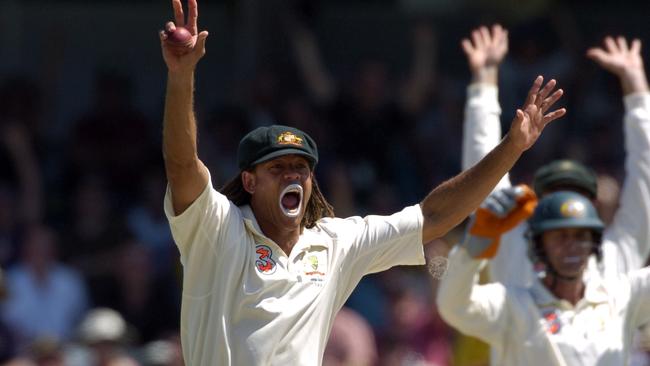
No. 18
ANDREW SYMONDS (Gold Coast)
A more Queensland true-blue bloke you’d never meet in a day’s march. He loved his state, his Queensland teammates and he absolutely cherished the maroon Bulls cap which sat atop his head. Much has been made of Steve Waugh wearing the same, weathered baggy green cap Test match after Test match, but Symonds had the same love affair with his Queensland cap. And what a person, and player, he was to have around the squad. Symonds was an extraordinary talent with bat, in the field and with the ball. I actually wish he had continued to bowl medium pace swing rather than off-spinner, so good was he off the long run. Has there been a better Australian fieldsman in the last 45 years? Maybe Ricky Ponting. But Symonds would be in the grand final. And what of his batting? He was such a clean hitter, that no ground in world cricket was too big for him once he got going. But he evolved early from being a bit of a thrasher – John Buchanan once famously labelled him as a wild brumby that may never be tamed – into a batsman who could effortless pace his innings. Yes he would still score quickly, but that was because his talent was such that in most overs he could find a four ball from a bowler. But the other five deliveries he would defend or let go like a defiant opening batsman from another era. He is a beauty Symo, and his strong character fitted nicely into the fabric of the Queensland set-up of the time.

No. 19.
ADAM DALE (Wynnum-Manly)
Queensland’s king of swing, Dale was an absolute sensation at the bowling crease for Queensland. Just like in the 1970s when fast bowler Jeff Thomson was paired with left arm swing bowler Geoff Dymock, Dale had a perfect combination bowling from one end while fast bowling henchmen like Bichel, Kasprowicz and Rackemann went after their prey at the other. Watching Dale’s subtle variations was as enjoyable as watching the wizardry of Shane Warne’s leg-spin. He could boomerang a ball away or into the batsmen, or swing it more subtly. Dale could also make the ball dip down on occasion like a class off-spinner bowling into the wind. That his 245 first class wickets came at an extraordinary average of 20.75 emphasised his greatness at the bowling crease. And he thoroughly deserved his two Test caps and 30 one-day international caps for Australia. Dale also took one of the greatest outfield catches of all time at long-on, and a quick search on YouTube will reveal his extraordinary deed of the day. He was a student of cricket and a good bloke who blended perfectly with the dressing room of his era. Never, ever should Dale’s cricketing career be understated. He is one of our best, that is for sure, just ask Test great Michael Hussey who struggled to hit him off the square at the Gabba or in Perth.

No. 20.
USMAN KHAWAJA (Valley)
Once Khawaja’s career runs its course, it would surprise no one to see him rising up the list and into the top 10. A little like Martin Love, Greg Ritchie and Stuart Law, Khawaja is stylish with seemingly more time to play his shots than his peers. And a little like Ritchie – Law and Love unfortunately did not get prolonged chances at Test level – one feels a little short changed that we have not yet seen the very best of Khawaja at the highest level. He has been a mighty contributor to the Queensland batting effort since his arrival from NSW both on and off the field.

